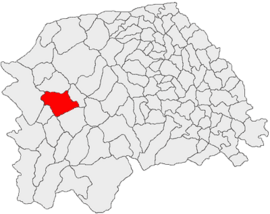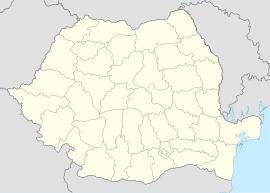Fundu Moldovei facts for kids
Quick facts for kids
Fundu Moldovei
German: Luisenthal
|
||
|---|---|---|

Fundu Moldovei town hall (in mid November 2017)
|
||
|
||

Location in Suceava County
|
||
| Country | ||
| County | Suceava | |
| Population
(2011)
|
Lua error in Module:Wd at line 1,575: attempt to index field 'wikibase' (a nil value). | |
| Time zone | EET/EEST (UTC+2/+3) | |
Fundu Moldovei is a small town, also known as a commune, located in the northeastern part of Romania. It is found in Suceava County, which is part of a historical region called Bukovina. The name Fundu Moldovei can also be heard as Luisenthal in German.
This commune is made up of ten different villages. These villages are Botuș, Botușel, Braniștea, Colacu, Delnița, Deluț, Fundu Moldovei, Obcina Ursului, Plai, and Smida Ungurenilor. Many years ago, a group of people called Zipser Germans used to live here. They were part of a larger community of Bukovina Germans in the area.
Fundu Moldovei is also a stop on the Via Transilvanica, which is a very long walking trail. It's a great place for hikers and people who love to explore nature.
A Glimpse into Fundu Moldovei's History
![]() Moldavia (1388–1775)
Moldavia (1388–1775)
![]() Habsburg Monarchy (1775–1804)
Habsburg Monarchy (1775–1804)
![]() Austrian Empire (1804–1867)
Austrian Empire (1804–1867)
![]() Austria-Hungary, Cisleithania (1867–1918)
Austria-Hungary, Cisleithania (1867–1918)
![]() Kingdom of Romania (1918–1947)
Kingdom of Romania (1918–1947)
![]() Romanian People's Republic (1947–1965)
Romanian People's Republic (1947–1965)
![]() Socialist Republic of Romania (1965–1989)
Socialist Republic of Romania (1965–1989)
![]() Romania (1989–present)
Romania (1989–present)
Fundu Moldovei has a rich history, especially because it was once a mining area. Like other mining towns in Suceava County, it was home to a significant German community. These were the Zipser Germans, who were part of the wider Bukovina Germans group.
They lived here for a long time, from the modern period until the middle of the 20th century. Their presence began during the time of the Habsburg monarchy, which was a powerful European royal family. Later, the area became part of the Austro-Hungarian Empire.
See also
 In Spanish: Fundu Moldovei para niños
In Spanish: Fundu Moldovei para niños



